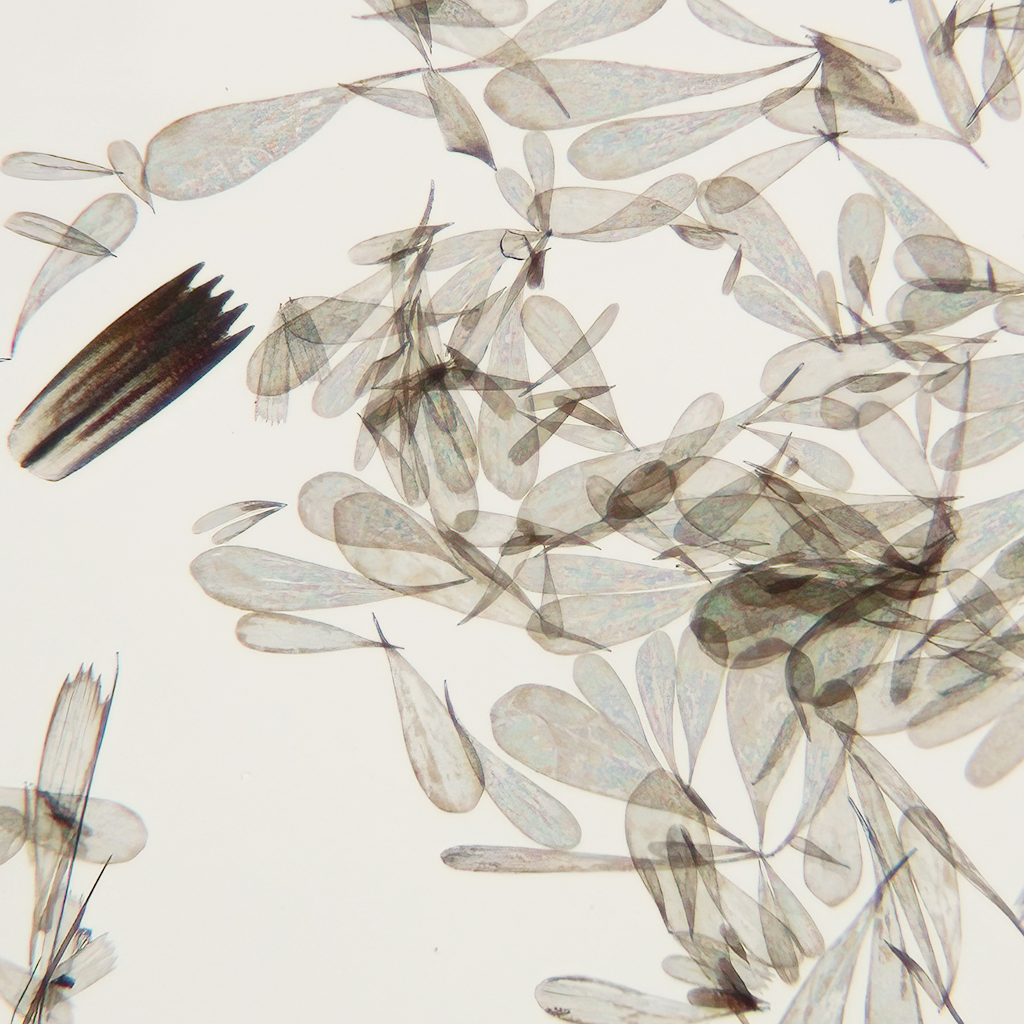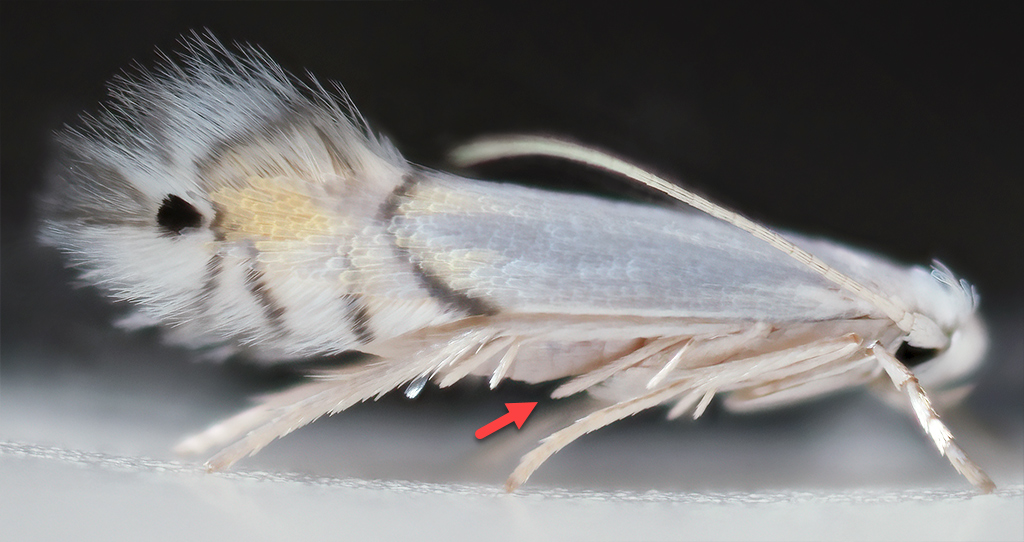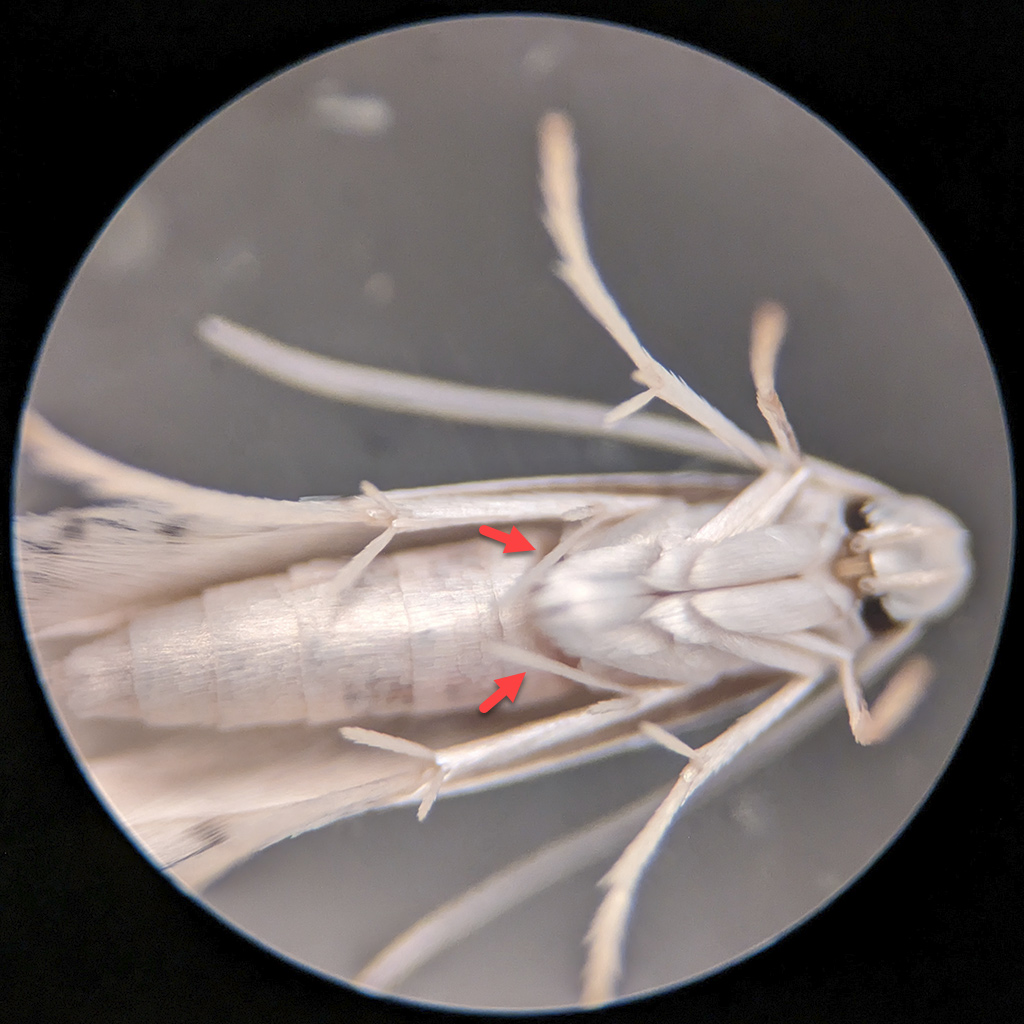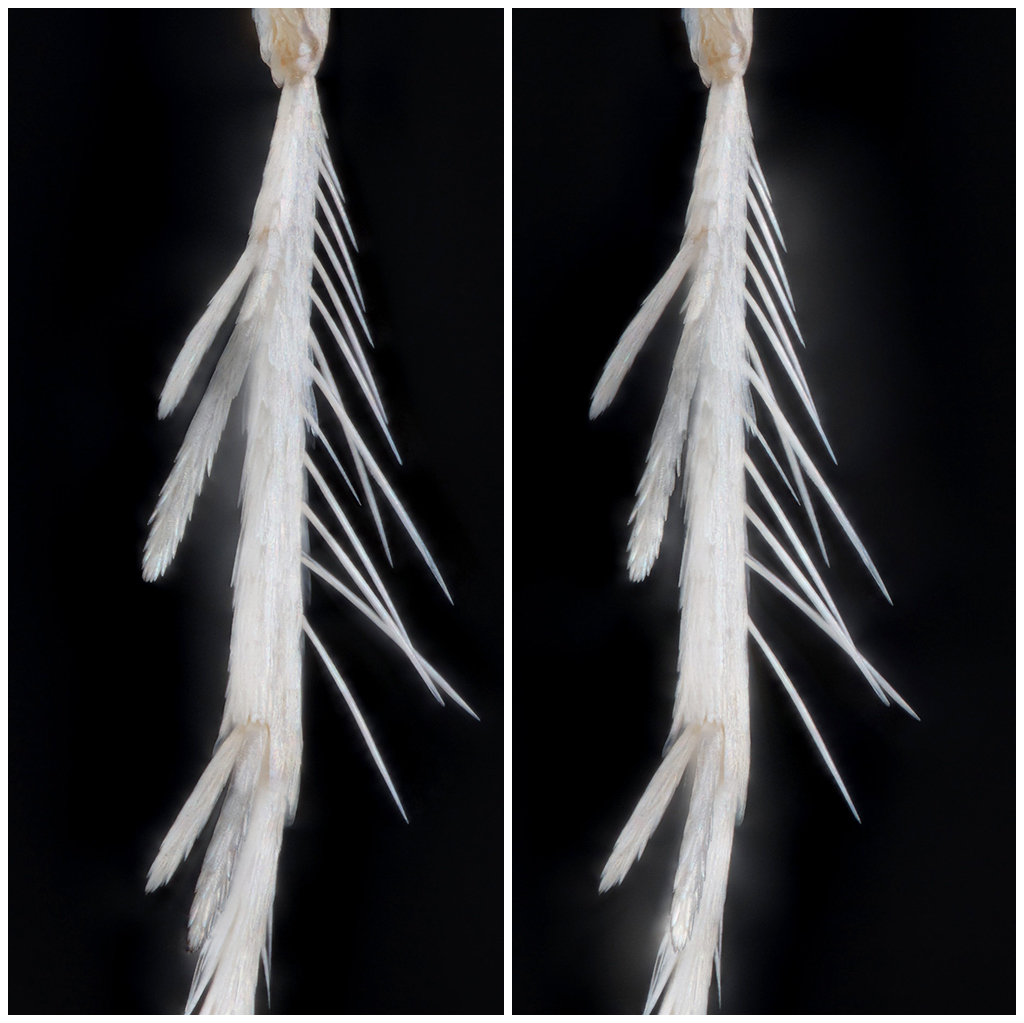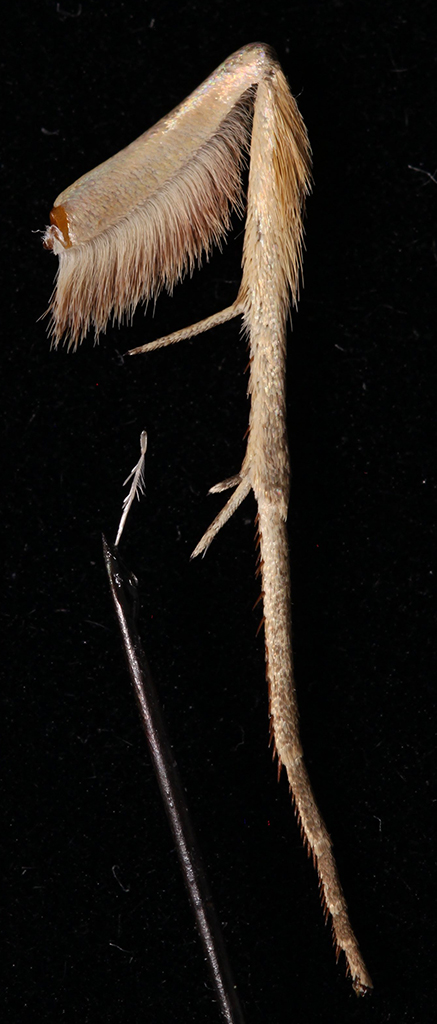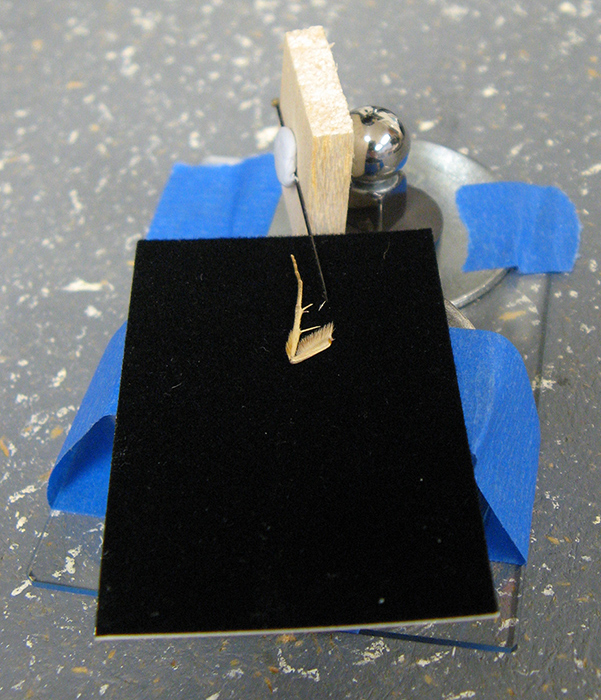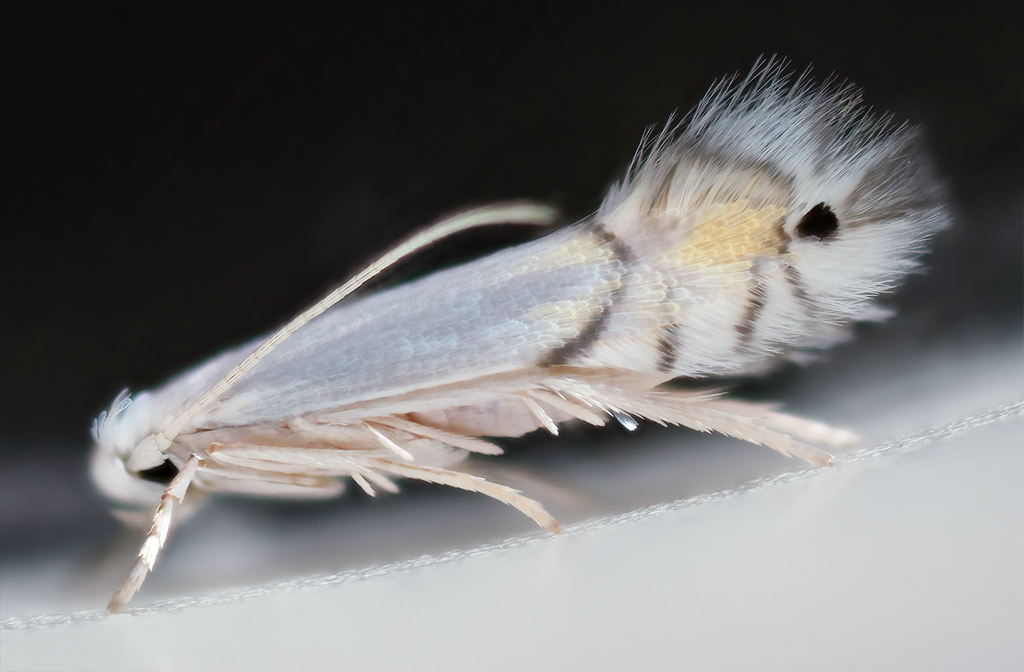
The current best reference for this beast is https://www.washingtonwine.org/wp-conte ... 236191.pdf , whose summary says:
My own grapes started showing leaf mines about the same time, but they were not a problem and I did not investigate further. This year I got curious about them, for no particular reason. A few quick searches suggested that the mines were likely small moths, and the fact that they were on grape led quickly to https://www.washingtonwine.org/research ... ning-pest/ and then to David's full report. I harvested a few leaves with intact cocoons, brought them indoors in small plastic boxes, and waited a few days for adults to emerge. David confirms that this is the beast he was writing about, and I'm happy to take his word for that because this is the first time I have paid attention to such small moths.SURVEY AND MONITORING OF THE INCIDENCE AND ABUNDANCE OF A NEW LEAFMINING PEST OF WINE GRAPES IN EASTERN WASHINGTON
DAVID G. JAMES
Final Report 2021- 2022 Washington State Grape and Wine Research Program
Leafminer damage on wine grapes was first reported from vineyards in the Tri-Cities area in September 2020. We determined that the damage was caused by a new, undescribed species of leafmining moth in the genus Phyllocnistis. This species is the first leafminer pest to be recorded damaging commercial wine grapes in North America.
...
Our research has shown that the Grape Leafminer, a new, undescribed species, can occur in large populations in eastern Washington vineyards with much visible evidence of leaf damage. However, as of 2021, it was only abundant in a few vineyards in the Tri-Cities area in the Columbia Valley AVA. It is possible or even likely that this pest will spread in the future and for populations to increase region-wide. However, it seems likely that Grape leafminer will principally be a cosmetic leaf pest issue. Affected leaves look unsightly, but economic damage to mature grapevines is unlikely. The impact of Grape Leafminer on nursery and newly-established young grapevines could be more significant, however, and needs further study.
Total length of the moth from tip of head to tip of wings is only about 2.8 mm.
To put that in perspective, here is the same moth photographed next to a penny:
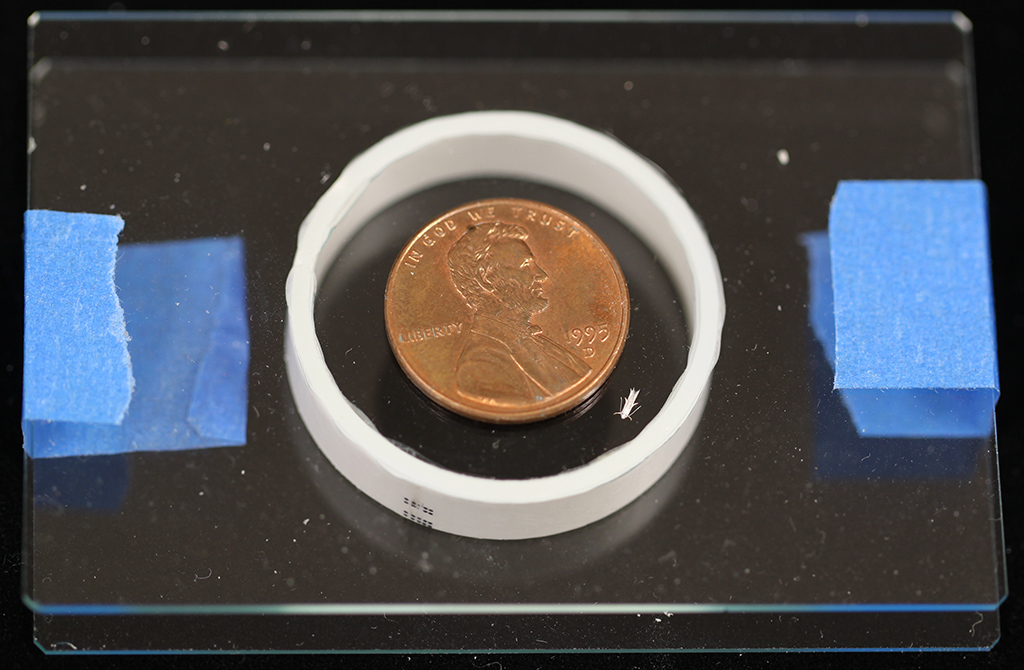
Here is a different specimen, dead, photographed at 10X and rendered in crossed-eye stereo.
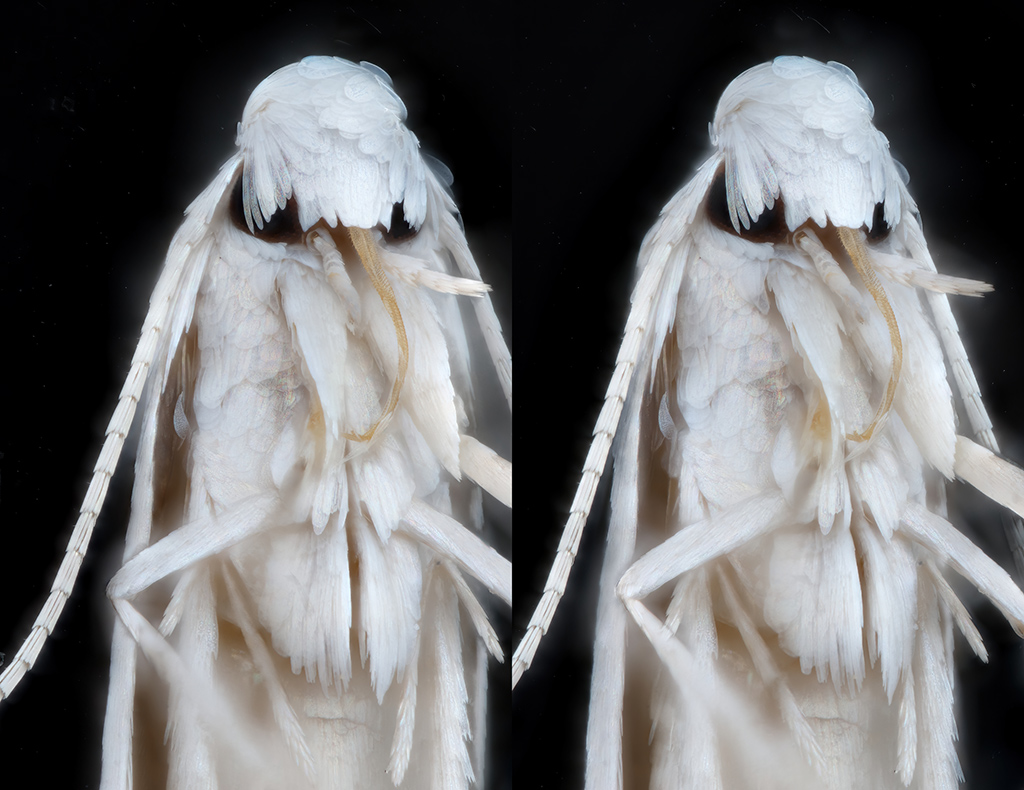
In this stereo view, the moth's right front leg (left side of photo) appears cut off because of limited stack depth. Everything else matches what I noticed through a dissecting scope.
The above specimen died with its proboscis extended, and since the proboscis was so short, I wondered if perhaps it was not coiled in life.
But in fact it is coiled as usual. Here is the same live individual seen in the first view:
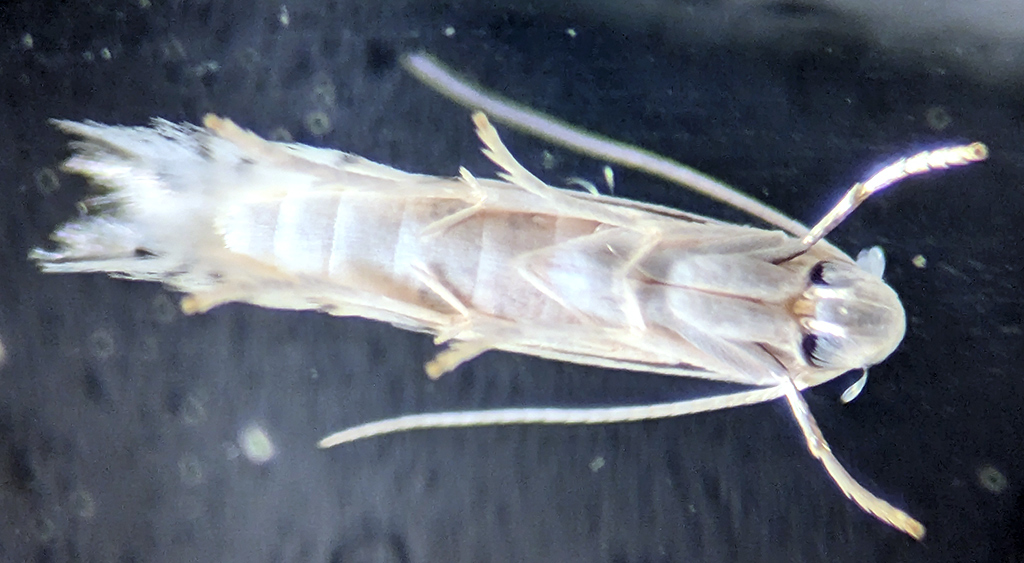
It's not immediately apparent at the size and scale of these images, but these moths have a fantastic set of misdirection markings. In life, looking through a 10X magnifier, the first thing I see is the expanded wing tips with big black eyespot and black stripes, and that end looks exactly like the head and legs of some critter I don't recognize. I can easily imagine being a spider, and thinking that's an obvious target for lunch. But then imagine the surprise when there's nothing there but scales! Here is my attempt at reproducing the effect:
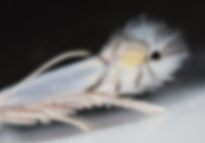
These moths were photographed using a variety of equipment. The full body side view was Canon T1i with Canon MP-E 65 at about 3X, single flash with softbox, a short stack by turning the lens ring. The subject was inside the small cage shown in the second image. The stereo pair was shot with Canon R7 using Mitutoyo M Plan Apo 10X NA 0.28 on Raynox DCR-150 tube lens, three flashes through LED tube light diffuser, 139 frames at 5 micron step. The stereo rendering initially had extensive transparent foreground, which I retouched from targeted stack-selected pairs. The live ventral view was cell phone through the eyepiece of a zoom dissecting scope at nominal 45X.
None of the views here really does justice to how shiny these moths are. I think I'll need a video for that.
--Rik

